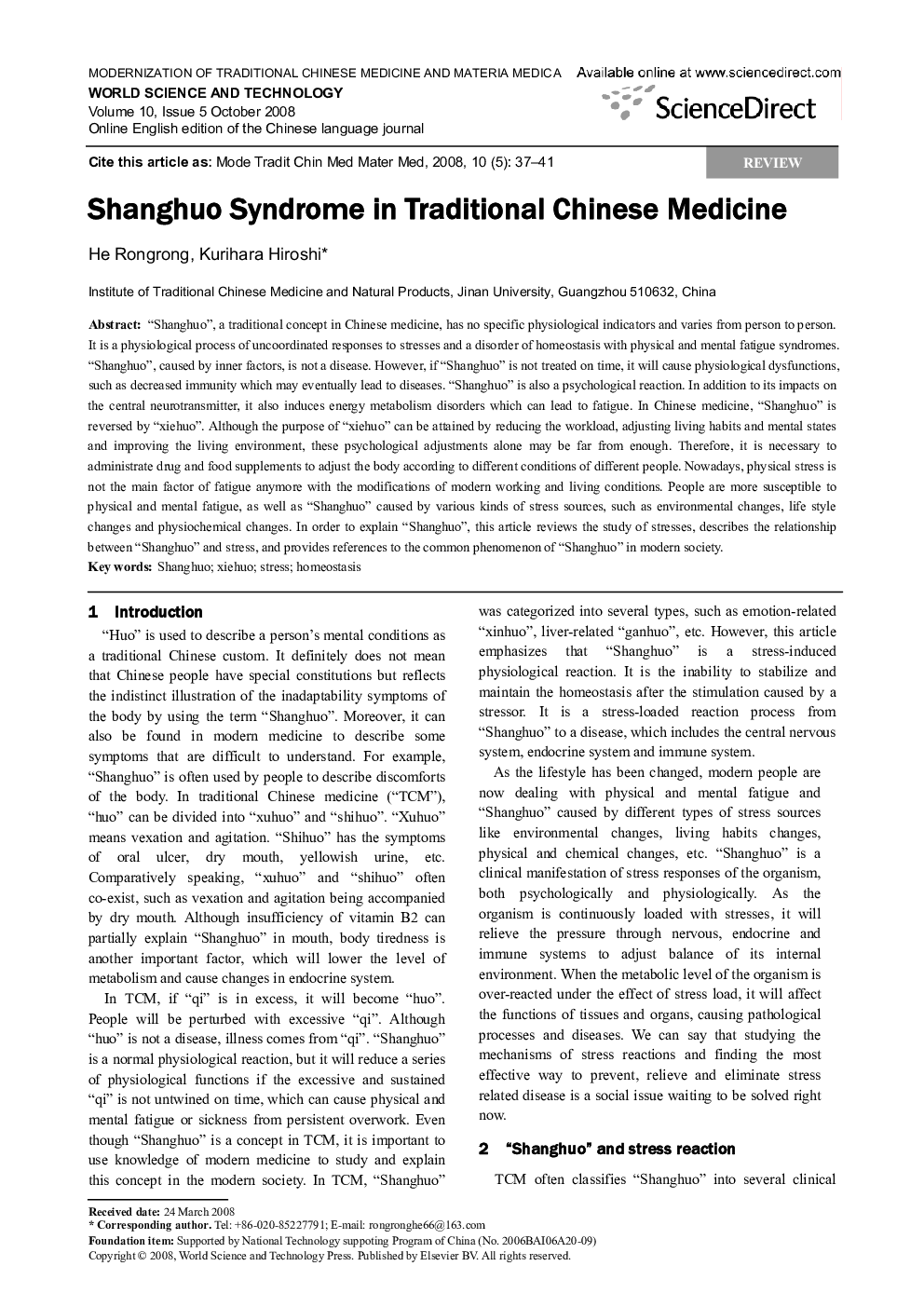| کد مقاله | کد نشریه | سال انتشار | مقاله انگلیسی | نسخه تمام متن |
|---|---|---|---|---|
| 2575474 | 1129792 | 2008 | 5 صفحه PDF | دانلود رایگان |

“Shanghuo”, a traditional concept in Chinese medicine, has no specific physiological indicators and varies from person to person. It is a physiological process of uncoordinated responses to stresses and a disorder of homeostasis with physical and mental fatigue syndromes. “Shanghuo”, caused by inner factors, is not a disease. However, if “Shanghuo” is not treated on time, it will cause physiological dysfunctions, such as decreased immunity which may eventually lead to diseases. “Shanghuo” is also a psychological reaction. In addition to its impacts on the central neurotransmitter, it also induces energy metabolism disorders which can lead to fatigue. In Chinese medicine, “Shanghuo” is reversed by “xiehuo”. Although the purpose of “xiehuo” can be attained by reducing the workload, adjusting living habits and mental states and improving the living environment, these psychological adjustments alone may be far from enough. Therefore, it is necessary to administrate drug and food supplements to adjust the body according to different conditions of different people. Nowadays, physical stress is not the main factor of fatigue anymore with the modifications of modern working and living conditions. People are more susceptible to physical and mental fatigue, as well as “Shanghuo” caused by various kinds of stress sources, such as environmental changes, life style changes and physiochemical changes. In order to explain “Shanghuo”, this article reviews the study of stresses, describes the relationship between “Shanghuo” and stress, and provides references to the common phenomenon of “Shanghuo” in modern society.
Journal: World Science and Technology - Volume 10, Issue 5, October 2008, Pages 37-41